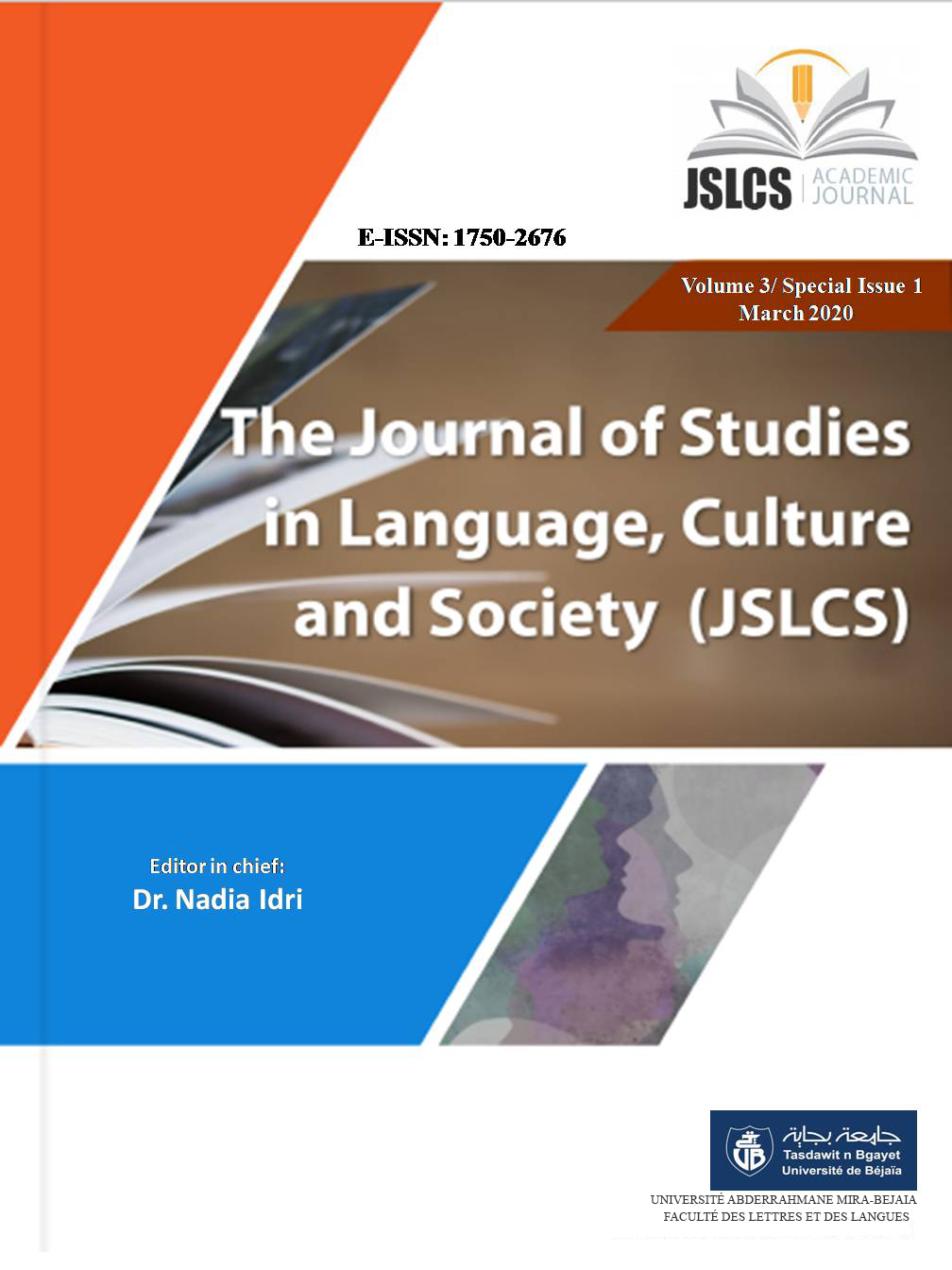The Effectiveness of EFL Students’ Use of ICT on Developing their Autonomy
Keywords:
EFL, ICT use, learner autonomyAbstract
Learner autonomy has received its due amount of attention in the literature of foreign language teaching. The concept has come to life since the 1980s. Learner autonomy has been considered as a goal of education, which ICTs, when used appropriately, may help in fostering. As such, the present study has continued that very focus by investigating the degree of autonomy that Moulay Ismail University EFL students enjoy and the extent to which they use ICTs for their learning. In essence, the study aimed at investigating how ICT’s use and learner autonomy are related. A cross-sectional quantitative design underpinned the study. A self-completion questionnaire was thus employed as an instrument to collect the data. As such, a total of 109 EFL undergraduate students took part in the study. A questionnaire was administered to the respondents to find out their level of use of ICT as well as their level of autonomy. Findings revealed that the students used ICT to a large extent, and their level of autonomy was shown to be high. It was, thus, found that their use of ICT level and autonomy were significantly related.
References
Akinsanmi, T. (2005). Encouraging effective and sustainable use of information and communication technologies for promoting education and development. In B. Bracey, & T. Culver (Eds.), Harnessing the Potential of ICT for education: A multi-stakeholder approach (pp. 239-252). Dublin: The United Nations Information and Communication Technologies Task Force.
Beatty, K. (2010). Teaching and researching computer-assisted language learning (2nd ed.). London: Pearson Education Limited.
Benson, P. (1997). The philosophy and politics of learner autonomy. In P. Benson & P. Voller (Eds.), Autonomy and Independence in Language Learning (pp. 18-34). London, New York: Routledge.
Benson, P. (2011). Teaching and researching autonomy. London: Routledge.
Cornu, B. (2010). Digital natives in a knowledge society: New challenges for education and for teachers. Proceedings of 15th and 16th International Conference of ICT in Teacher Education: Policy, Open Educational Resources and Partnership. St. Petersburg, Russian Federation.
Cuban, L. (2001). Oversold and underused: Computers in the classrooms. Massachusetts: Harvard University Press.
Davis, D. (2005). Connecting the generations: Insights, challenges and opportunities. In B. Bracey, & T. Culver (Eds.), Harnessing the Potential of ICT for Education: A multi-stakeholder approach (230-238). Dublin: The United Nations Information and Communication Technologies Task Force.
Dudeney, G. & Hockly, N. (2012). ICT in ELT: How did we get here and where are we going? ELT Journal,533-542.
El-Ayachi, T. (2013). The use of ICT in tertiary education. Proceedings of the 19th Conference of ICT in Education: Future prospects and potential challenges (pp. 69-76). Meknes.
Kerouad, S. (2019). The questionnaire construction. A Paper Presented at a Seminar as Part of the MA Applied Language Studies Program’s Training. Moulay Ismail University, Meknes, Morocco.
Kerouad, S., & Fagroud, M. (2013). Teachers’ perceptions and usage of ICT in teaching. Proceedings of the 19th Conference of ICT in Education: Future prospects and potential challenges(63-68). Meknes.
Kumar, J., & Pasricha, A. (2014). ICT in education: Enhancing teaching and learning. An International Scholarly Research Journal for Interdisciplinary Studies. 2, 935-946.
Larouz, M., & Aqachmar, S. (2013). Digital-media literacy and achievement in English: What relationship? Proceedings of the 19th Conference of ICT in Education: Future prospects and potential challenges(135-146). Meknes.
Larouz, M., & Fatmi, H. (2014). Digital literacy in higher education: Prospects and challenges. Proceedings of the International Conference Media, Culture and Education (39-54). Meknes.
Little, D. (1991). Learner autonomy 1: Definitions, issues and problems. Dublin: Authentik Language Learning Resources.
Misoum, M. (2016). ICT Use and EFL Learner Autonomy -Student Questionnaire.
Mudasiru, O. Y. (2005). Information and communication technology and education: Analysing the Nigerian national policy for information technology. International Education Journal, 6(3), 316-321.
Nunan, D. (1988). The learner-centred curriculum: A study in second language teaching.
New York: Cambridge University Press.
Orakci, S., & Gelisli, Y. (2017). Learner autonomy scale: A scale development study. Malaysian Online Journal of Educational Sciences, 5 (4), 25-35.
Ouakrime, M. (1988). The neglected species need some “AIR”: Focus on the learner. In A. Zaki, A. Boumoussa, M. Najbi, & S. Mehdi (Eds.), ELT in Morocco: Directions for the Nineties. Proceedings of the Eighth National Conference (pp. 64-68). Rabat.
Oxford, R. L. (2017). Teaching and Researching Language Learning Strategies: Self-regulation in context. New York: Routledge.
Pennycook, A. (1997). Cultural alternatives and autonomy. In P. Benson & P. Voller (Eds.), Autonomy and Independence in Language Learning (pp. 35-53). London, New York: Routledge.
Pichugova, I. L., Stepura, S. N., & Pravosudov. M. M. (2016). Issues of promoting learner autonomy in EFL context. SHS Web of 28th Conference. Russia: Tomsk Polytechnic University.
Reinders, H., & Hubbard, P. (2013). CALL and learner autonomy: Affordances and constraints. In M. Thomas, H. Reinders, & M. Warschauer (Eds.), Contemporary Computer-assisted Language Learning (pp. 359-375). London: Bloomsbury Academic.
Rodrigues, S. (2003). Conditioned pupil disposition, autonomy, and effective use of ICT in science classrooms. The Educational Forum (pp. 266-275). England: Routledge.
Tassinari, M. G. (2012). Evaluating learner autonomy: A dynamic model with descriptors. Studies in Self-Access Learning Journal, 3(1), 24-40.
Tin, D. T. (2012). Learner autonomy perception and performance: A study on Vietnamese students in online and offline learning environments. Unpublished Dissertation.La Trobe University, Australia.
Tri, D. H., & Nguyen, N. H. (n.d.). An exploratory study of ICT use in English language learning among EFL university students. Teaching English with Technology, 14(4), 32-46.








